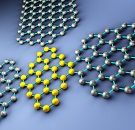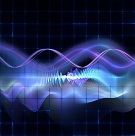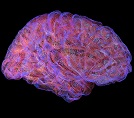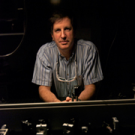Quantum, Photonic and Electronic Devices
Quantum, photonics and electronics research at UC Davis includes a wide spectrum of topics, including nanoscale electronics and photonics, energy conversion devices, quantum information devices, biosensing and biophotonic technologies, photonic circuits and systems and optical metamaterials, among others. This wide range of research topics has a broad array of applications in quantum science, imaging and bio-, ag- and health science, as well as telecommunications, high performance computing, renewable energy and beyond. The research projects undertaken by the photonics and electronics faculty at UC Davis are multidisciplinary and strongly collaborative. These projects, combined with our state of the art micro- and nano- fabrication and characterization facilities, allow students and researchers to engage in cutting-edge research activities in an active and exciting research environment. For more detailed descriptions of the ECE at UC Davis’ strengths in this diverse area, please see the research focus descriptions below that link to specific faculty in each sub-area.

Nanoscale Electronics and Photonics
Nanoscale structures have unique properties that can be leveraged to discover and engineer effects that can be usefully employed for a wide range of topics, from developing unique paradigms for computation and telecommunications to advanced concepts for sensors and actuators for biological systems. Research interests focus on semiconductor physics in electronic and photonic devices at the nanoscale, low-dimensional materials and effects, molecular electronics, metaphotonics, topological-photonics and bio-technologies.

Energy Conversion Technologies
Energy conversion is at the heart of most modern technologies, and in the 21st century, efficient conversion between electrical energy and optical, thermal, vibrational or other forms of energy will be critically important for improving and implementing renewable energy sources, decreasing carbon footprints and improving technologies across the electronics and photonics spectrum. Key research interests at UC Davis focus on lighting and display technologies, solar and thermal energy conversion and optoelectronic devices.

Biosensing, Biophotonics and Bioelectronics
Electronic and photonic devices often possess unique functionality for converting chemical and biological processes into electrical or optical signals for detecting, identifying and monitoring biological processes. Such devices are promising for biological, medical, agricultural or food science applications, as well as the advancement of scientific understanding of biophysical processes. Research interests in ECE at UC Davis focus on nanostructured electrical, electrochemical and photonic systems, biosensing, bioimaging, precision agriculture and in situ monitoring, and bioelectronics.

Quantum Devices and Information Processing
Quantum laws of nature play a pivotal role in modern engineering from the control of exotic processes at the atomic scale to the implementation of novel paradigms for information processing. The quantum engineering and quantum information groups explore nanoscale systems that can be used for quantum computing, communication and information processing, as well as for the development of next-generation sensing, imaging, micromechanical and biophysical devices.

Photonics in Computing, Communications and Information Processing
Photonics offers massive parallelism, extremely broad bandwidth and low-loss transmission far beyond traditional counterparts constrained by electronic impedances. Hence, all-optical or hybrid photonic-electronic technologies can enable innovative computing, communication and information processing systems with unprecedented performance and energy-efficiency. Silicon-photonic technologies, optically-interconnected computer systems, photonic neuromorphic computing, coherent optical communications, Fourier-optical-devices and photonic signal processors are just a few examples of the myriad of projects in this area that UC Davis researchers are engaged in.

RF and THz Photonics
Electromagnetic waves span "DC to daylight." In the THz portion of the spectrum, electromagnetic waves possess unique properties that combine attributes of photonics and microwave electronics. THz waves can be generated from intense sub-picosecond optical pulses or through other means, such as the mixing of multiple optical waves. THz technologies are of great interest for their promise of futuristic imaging, sensing and spectroscopic capabilities. At even larger wavelengths, in the microwave domain, signal generation and signal processing can utilize low-noise, high-precision envelopes of photonic carrier waves in photonic integrated circuits and high-speed photonic detectors can serve as RF-photonic mixers. Even further along the electromagnetic wavelength scale, high-power radars and 5G transceivers can also exploit similar RF-photonic technologies leveraging photonic waves. UC Davis researchers are actively engaged in bringing photonic technologies to the THz and to the RF domains.

Non-Traditional Imaging and Displays
A synthesis of non-traditional imaging methods and new computational algorithms can achieve remarkable imaging capabilities unavailable in traditional counterparts. Fourier optics, interferometric imaging, photonic convolution and photonic masking can achieve image processing directly in the photonic domain. Integrated photonic solutions to photonic imaging can also offer a number of new techniques for imaging. At UC Davis, researchers are exploring a wide array of futuristic imaging technologies based on advanced photonics and signal-processing concepts.
















